|
The Streets of Memphis |
|
...and some Vintage Neighborhood Photos |
|
|
|
|
|
It's often said that every street in Memphis has one or
more beautiful homes. The city has always been noted
for beautiful neighborhoods and
particularly for elegant homes and spectacular gardens.
Many of these neighborhoods were developed along some of the
city's best known tree-lined avenues. Stately homes
lined most of these avenues in the early 1900s. But
sadly many of these historic homes have been demolished and
replaced with fast food drive- in restaurants, parking lots,
and gas stations. |
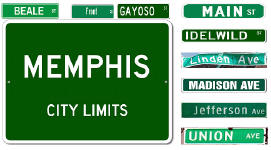 |
|
|
|
|
|
|
This page will not attempt to include every street and
avenue in Memphis - only a selection of some of the main
roads into and out of some of the city's historic
neighborhoods. We are sorry if your street or avenue
hasn't been included. |
|
|
|
|
|
|
|
|
|
|
Chick on Small Photos for an enlargement |
|
|
|
|
|
|
|
|
|
 |
Beale Street is only 1.8 miles long and is the most
famous street in Memphis. It is significant in the
city's history, noted for the downtown section of the street
with all the bars and entertainment halls, because that's
where the Blues were born. |
|
|
The street was created by developer Robertson Topp in 1841.
He named it for a military hero of the Mexican-American War.
The original name was BEAL AVENUE - the "Beal" without an "e".
It wasn't until the late 1950s with help from entertainer
Danny Thomas that "Avenue" was officially changed to "Street". |
| |
| |
|
|
|
|
|
|
|
The street became a significant location in the city's
history after the Civil War. Many traveling
musicians has begun performing on Beale and the area
became home to black-owned businesses, clubs, and
restaurants. When the First Baptist Church was built
there by a congregation of freed slaves. Beale had become
the area for Memphis black culture. And that history was
further enhanced with the arrival of W. C. Handy and the
birth of blues music. |
|
|
|
| |
|
 |
In
1880, three quarters of the nation's cotton found its way
to Memphis. By the 20th century Memphis was the
largest cotton market in the world. All this cotton
led to the development of Front Street
and it became the heart of the cotton trade, as well as
the center of the economy for more than a hundred years.
Front Street earned it's nickname "Cotton Row" |
|
|
|
|
Many
small cotton companies opened on Front Street, and the vast
majority of the buildings on Cotton Row were built between
1848 and 1928. The architecture of the street had a
"sameness" to it. They were all brick buildings with
wide entrances on the ground floor, so large cotton bales
could be moved in and out. And they needed large windows
and skylights on the top floors where the classing of cotton
took place. They were all sturdy buildings but generally
unpretentious. |
|
|
 |
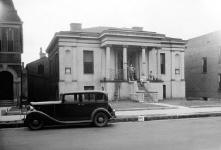 |
|
Front Street in 1900 |
Dunscomb Home |
|
|
|
|
The wealthy cotton merchants
of the city all wanted grand homes ... only they didn't want them on Front
Street, and only a few merchants built unique homes on
South Front. The rest of the street was occupied by
those large unpretentious, but sturdy brick warehouses, which
ironically have now been converted into very expensive town
houses with great river views. |
|
|
|
When Front Street was originally developed, the city
planners kept "open spaces" not only for views of the
river, but for use in various community functions.
During most years of the Memphis Cotton Carnival, there
was always a "Royal American Shows" carnival midway for
the public and it was always set up along Front Street -
with all the rides, games and slide shows. |
 |
| |
Midway on Front Street |
|
|
|
|
Sometime in the mid 50s, the
"electronic age" started the decline of Cotton row.
Fewer and fewer people were needed to handle more cotton.
It eventually became possible for one person to literally run
a cotton business from a small office with just a phone and a
computer. By the 80s, like the rest of downtown Memphis,
Front Street became a boarded up ghost town. |
|
|
|
|
|
|
 |
Shortly after the city had a name, Main Street became its heart and soul.
It was
synonymous with "downtown" to everyone. Memphians
thought of Main Street as the section from Court Square to
the Orpheum Theatre or to Beale Street. Any
street east of this section of Main Street (and also
east of 3rd Street) was a choice location to build a
family home. |
|
|
|
|
Neighborhoods developed on every major avenue that ran
into Main Street. And Memphis continued to grow outward
from all these streets, leading the way to "Suburban flight".
This took a major toll on downtown. And then the Civil
Rights acts and "White flight" created further decline.
Main Street fell on hard times and was a virtual "Ghost town". |
|
|
|
|
 |
 |
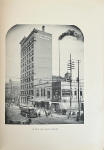 |
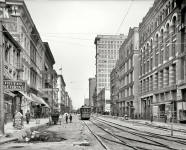 |
|
Main - Gayoso 1895 |
Main 1888 |
Porter Bldg 1900 |
Main - Union |
|
|
|
|
To lure shoppers back to downtown, Main Street was
converted to a big pedestrian mall between Poplar and
Peabody Place in 1976. This "Mid-America Mall"
opened with big fanfare - but it just didn't work.
So the name was changed to "Main Street Mall". It
still didn't work and major shops and stores closed and
were boarded up. Somewhere in time, Main was
remodeled to the way it currently looks and streetcar
tracks were re-installed. |
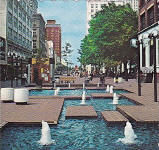 |
| |
Mid
-America Mall |
|
|
|
|
|
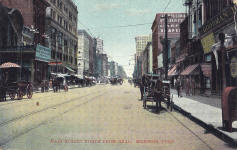 |
 |
 |
|
Main - Gayoso - 1902 |
Main - Peabody Hotel
1900 |
Main - Madison 1902 |
|
|
|
|
Today many of those large Main Street buildings that sat
vacant during the 70s and 80s have been re-purposed into
condominiums and downtown and Main Street are set for a
"comeback". Sadly, it did not happen sooner in order to
save more of the classic downtown architecture. |
|
|
|
|
|
|
 |
Probably no street in Memphis had more elegant homes lining the
Boulevard than Union Avenue. Today Union has become
a maze of "fast food drive through" restaurants
and gas stations. It has evolved from a muddy
country road in the early 1900s to the major COMMERCIAL
thoroughfare of the city. For many, this is the
street to avoid at all costs. |
|
|
|
|
Before the automobile became King, Union Avenue looked a lot
like Peabody Avenue - a residential street with beautiful
mansions. In 1924 Union was widened ...
Voila!
And Memphis began moving to the suburbs. And Union
property owners began the shift to commercial by adding their
businesses to the front of their homes. And the highly
popular and successful Fortune's first drive-in opened its
Union location. Plus, there was no trolley line to
get in the way. |
|
|
 |
 |
 |
|
Vintage Union Postcard |
Union 1906 |
19th C. Club 1909 |
|
|
|
 |
 |
 |
|
Union 1900 |
Union 1910 |
Union 1900 |
|
|
|
|
|
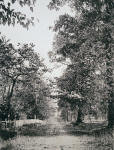 |
 |
 |
|
Union 1895 |
Masonic Lodge 2021 |
Union 1900 |
|
|
|
|
Union, today is a nightmare for driver's, pedestrian's, and
the few homeowners who still live there. It's a
free-for-all speedway with six lanes, where rules, or courtesy
don't seem to exist. There's no street in the city that
is more "bad-mouthed" than Union Avenue. |
|
|
|
|
|
|
 |
Adams was the historic street of choice for the wealthy merchants of Memphis. It became home to numerous
Gothic and Neo-Classical Revival mansions and was known as millionaire's row. Some of
the mansions are still standing and the area is now called
"The Historic District" Several of the
surviving homes have
become museums. Others are still privately owned. |
| |
|
|
|
|
|
|
|
Adams was home to the wealthy families of Memphis. They
built their homes here in an area that was considered the
"outskirts of town". These families were the
influential ones in the growth of the city. Most of
their wealth was made as cotton factors, riverboat and
railroad tycoons, grocers, politicians, and bank presidents.
They all had many children and married into other families of
wealth. |
|
|
|
|
|
|
|
Sadly, only a few of their grand homes have survived.
Fortunately we are able to visit a couple of them, which are
open to the public. |
|
|
|
|
|
|
 |
Poplar was one of 20 original streets laid out for the new town of
Memphis. It connected to an already existing road
and continued for many miles into Shelby County.
Wagons filled with cotton traveled Poplar regularly and
contributed to Memphis becoming a major cotton market.
Poplar was, and is, "The spine of the city". |
|
|
|
|
The street was also a toll road at the beginning, and a
trip down Poplar to Collierville was a two day journey.
Until the 1880s, it was a dirt road maintained by convicts
from the Shelby County Jail. In 1882, the city paved the
street with cedar blocks, but these soon rotted and were
replaced with gravel.
|
|
|
 |
 |
|
Poplar 1900 |
The old Van Vleet
home |
|
|
|
|
At the beginning of the 20th Century, the street was widened
to 100 feet and was paved with asphalt. Around the same
time trolley tracks were laid, making the street more
important. Businesses as well as large homes developed
on the Avenue. It also was the gateway to Overton Park.
|
|
|
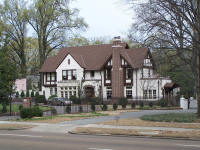 |
 |
 |
|
Poplar today |
Poplar today |
Poplar today |
|
|
|
|
Now there is talk in the City
Council about changing the name of Poplar.
WHY??? |
|
|
 |
 |
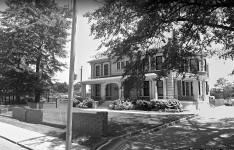 |
|
Poplar today |
Poplar today |
Poplar today |
|
|
|
|
|
|
|
 |
From the earliest days, Madison Avenue was known as "The
Wall Street of Memphis". The Avenue also had some
impressive tenants
as well as being witness to historic events.
|
|
|
|
|
After the Civil War, Jefferson Davis made his career change
from Confederate president to insurance salesman, at Second
and Madison. The city's first electric streetlight
appeared on Madison in 1881. And the University of
Memphis began as a two year teacher's college at Main and
Madison in 1912. Madison was also the location of the
"Dummy Line" the main east-west streetcar line that went from
downtown to the Fairgrounds.
|
|
|
 |
 |
 |
|
Madison 1875 |
Madison 1895 |
Madison 1907 |
|
|
|
|
Madison was originally named "Madison Street", but in 1910,
Memphis reorganized the all East-West roads to "Avenue."
Madison begins at Front Street
and runs east, ending at East Parkway.
Many
commercial and residential structures sprung up at the
beginning of the 20th Century. Most of this stretch of
Madison contains its original granite curbs. |
|
|
 |
 |
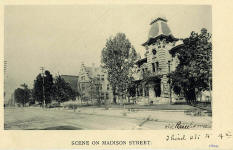 |
|
Madison 1905 |
Madison 1909 |
Madison 1900 |
|
|
|
 |
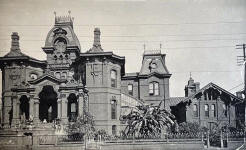 |
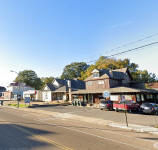 |
|
Madison 1900 |
Napoleon Hill house
1900 |
Madison today |
|
|
|
|
|
|
|
 |
Vance was originally established in the 19th Century as a
White, upper-class neighborhood. It went through
stages of "co-existence" and ended up becoming the
core of the Memphis African-American life in the 20th
century.
|
|
|
|
|
Most
owners of black-owned businesses on Beale street lived in the Vance
neighborhoods. It was the center of black business,
commerce, education, ... essentially the black "Main
Downtown". The Vance neighborhood suffered through
"urban renewal" programs and between 1935 and 1968, a steady
demoliton campaign demolished more than half of the original
structures. |
|
|
 |
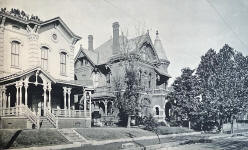 |
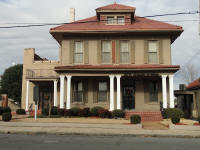 |
|
Vance 1900 |
Vance 1900 |
Vance today |
|
|
|
|
|
|
|
 |
Peabody Avenue runs from west to east and continues as far
a Cooper Street. While there are some sections of
the street that have become commercial, the majority
has continued as wealthy middle class neighborhoods with
large, beautiful homes. Few people know that
Peabody was originally nick-named "Appeal Avenue"
due to land-owners who shared ownership of the old Appeal
Newspaper. |
|
|
|
 |
 |
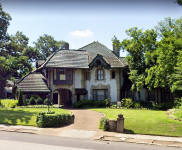 |
|
Peabody today |
E. H. Crump House |
Peabody today |
|
|
|
 |
 |
 |
|
Peabody today |
Peabody today |
Peabody today |
|
|
|
 |
 |
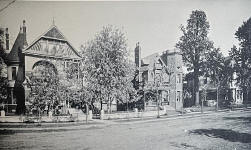 |
|
Beautiful Street |
Peabody today |
Peabody 1900 |
|
|
|
|
|
|
|
 |
Developed in the 1850s, Central Avenue was home to the
city's wealthy middle-class who had moved away from the
downtown area. The areas around Central Avenue
are known as "Central Gardens" and from 1900 to 1929, they
were called the most "Prestigious neighborhood in Memphis"
|
|
|
|
|
The
varied architectural styles of the neighborhood worked very well as did the many
types of building materials. The workmanship was
consistently the highest quality. During "Suburban
Flight" and "White Flight", many residents of Central Avenue
and Central Gardens stayed in place and maintained the
value of their property. At that time the area became
known as "the best kept secret in Memphis". |
|
|
 |
 |
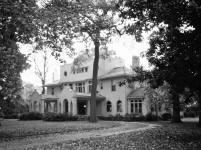 |
|
Central today |
Ashlar Hall |
Central 1900 |
|
|
|
|
A
project to repave and reduce the street to two lanes as well
as add bike lanes has been delayed at least two more years.
Those plans have been put on hold amid major MLGW utility work
on the street. |
|
|
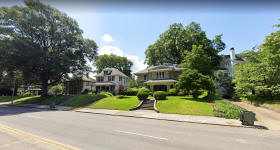 |
 |
 |
|
Central was, and is one of the most beautiful streets in
Memphis. |
|
|
|
|
|
|
|
 |
Linden Avenue runs roughly, parallel with Peabody Ave -
from mid-town to East Parkway. It's a family
street of moderate homes, all showing great pride in the
neighborhood. Like all Memphis streets, several
homes along the avenue will stand out from the others. |
|
|
|
 |
 |
 |
|
Linden 1900 |
Linden today |
Linden today |
|
|
|
|
|
|
|
|
|
 |
The Memphis Parkways: This system of parkways forms
the original outer beltway around the city. They
were designed by George Kessler in 1901 as part of his
master plan to connect all the parks of the city. |
|
|
|
|
The parkways have grown into some of the most beautiful
thoroughfares in the city ... and the homes and gardens along
the parkways are some of the most impressive. |
|
|
 |
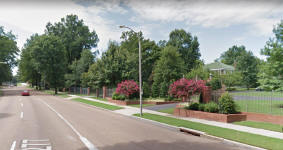 |
 |
|
Parkway 1900 |
East Parkway today |
Parkway 1900 |
|
|
|
|
North Parkway was also known as Speedway. George
Kessler originally designed parts of the Parkway system to be
straight portions of tree-lines avenues where car and carriage
owners could race against each other. Memphis ended this
practice in 1910 and imposed a speed limit. |
|
|
 |
 |
 |
|
South Parkway today |
Parkway 1914 |
North Parkway today. |
|
|
|
|
The
Memphis Parkway System is about 12 miles long and varies from
100 to 250 feet wide. It extends to the east from
Riverside Park south of downtown to a point several blocks
south of Overton Park where it turns north as far as the
northeast corner of the park , then runs west all the way back
to downtown. Much of the parkway contains a grassy or
landscaped median. |
|
|
|
|
 |
Jefferson Avenue was once lined with grand Victorian
homes. Today it's commercial all the way and quite
frankly BORING. It ends at Parkway and the last
block begins to show " the street that was". |
|
|
|
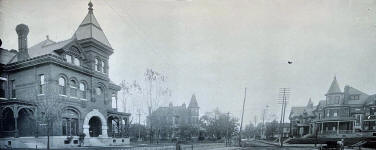 |
 |
 |
|
Jefferson Avenue 1900 |
Jefferson today |
Lowenstein house |
|
|
|
|
Jefferson Avenue was one of the original streets laid out
by Memphis founders, Jackson, Overton, and Westchester.
Apparently no Memphis street was in more of a rush to accommodate
the automobile than it was. In the mid 1960s, Jefferson not
only was widened but realigned with the construction of Danny Thomas
Blvd. |
|
|
 |
 |
 |
|
Jefferson near McNeil |
Jefferson near Bellevue |
Jefferson near Parkway |
|
|
|
|
|
|
|
 |
Harbert Avenue runs parallel with Central Avenue as far as
East Parkway. Perhaps no street in the city shows more
variety of homes than Harbert - from huge mansions to small
1 bedroom ... often side by side. You will not find a
"cookie-cutter" neighborhood along Harbert. |
|
|
|
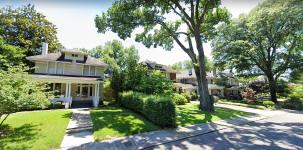 |
 |
|
Large Mansions |
Large Mansions |
|
|
|
 |
 |
 |
|
Large Homes |
Large Homes |
Large Homes |
|
|
|
|
There are
many "hidden gems" along Harbert Avenue. |
|
|
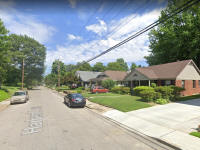 |
 |
 |
|
Moderate Homes |
Moderate Homes |
Small Homes. |
|
|
|
|
|
|
|
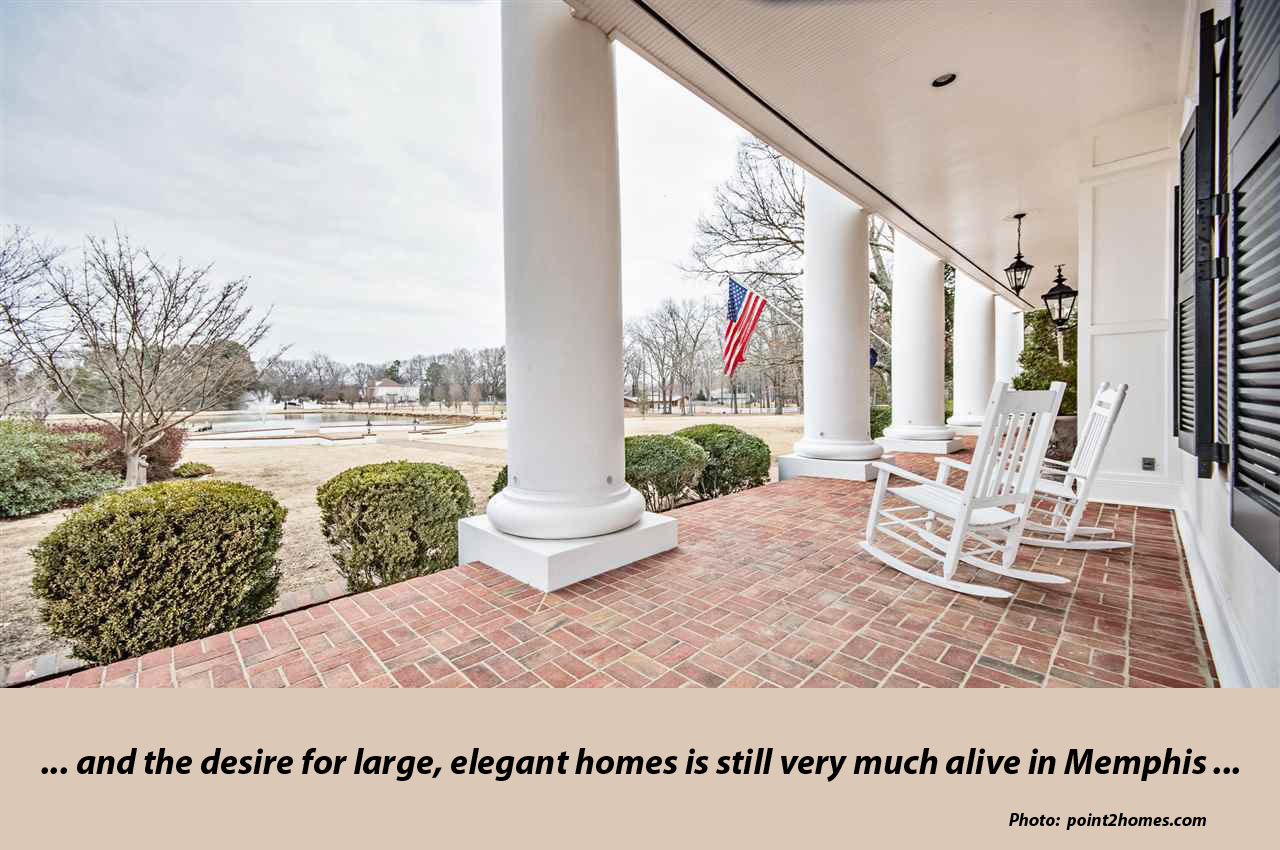 |
|
|
|
|
|
There are separate pages elsewhere on the
website dedicated to BEALE STREET... MAIN STREET ... FRONT STREET...
MADISON AVENUE ... UNION AVENUE |
|
|
|
|
|
|
|
|
|
|
|
|
|
|
|
|
|
|
|
|
|
|
|
|
|
|
|
Credits |
|
|
|
The
Historic-Memphis website does not intentionally post copyrighted
photos and material without permission or credit.
On
occasion a "non-credited" photo might possibly be posted because we
were unable to find a name to give credit. Because of the nature of
our non-commercial, non-profit, educational website, we strongly
believe that these photos would be considered "Fair Use. We have
certainly made no monetary gain, although those using this website
for historic or Genealogy research have certainly profited. If by
chance,
we have posted your copyrighted photo, please contact us, and we'll
remove it immediately, or we'll add your credit if that's your
choice. In the past, we have found that many photographers
volunteer to have their works included on these pages and we'll
also do that if you contact us with a photo that fits a particular
page. |
|
|
|
The "Historic-Memphis" website would like to acknowledge and thank the
following for their contributions which helped make this website
possible:
Memphis
Public Library, Memphis University Library, Memphis Law Library,
Memphis Commercial Appeal, Memphis Press Scimitar, Shelby County
Register of Deeds, Memphis City Schools, Memphis Business Men's
Club, Memphis Chamber of Commerce, Memphis City Park Commission,
Memphis Film Commision, Carnival Memphis, Memphis Historical
Railroad Page, Memphis Heritage Inc, Beale Street Historic District,
Cobblestone Historic District, Memphis Historic Districts, Vance
Lauderdale Family Archives, Tennessee State Archives, Library of
Congress, Kemmons Wilson Family, Richard S. Brashier, Lee Askew,
George Whitworth, Woody Savage, Dr. Wynn Earle, Jr., and many individuals whose assistance is
acknowledged on the pages of their contributions. Special
thanks to Memphis Realtor, Joe Spake, for giving us carte blanche
access to his outstanding collection of contemporary Memphis photos.
We do not have high definition copies of the photos on these
pages. If anyone wishes to secure high definition photos,
you'll have to contact the photographer or the collector.
(To avoid any possibility of contributing to SPAM, we do not
maintain a file of email addresses for anyone who contacts us). |
|
|
|
|
|
|
|
|
|
|
<><><><><> |
|
|
|
|
|
|
|
|
|